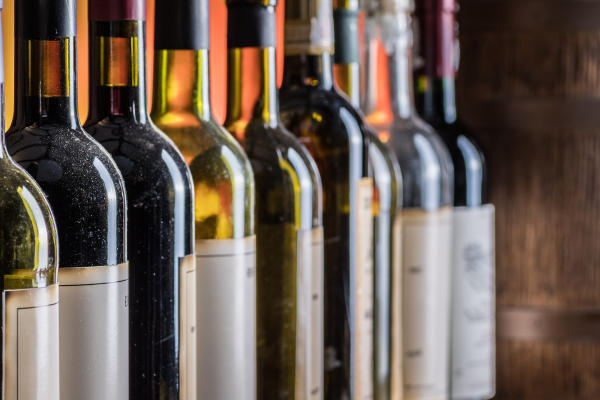How to Save Money on Wine

Use our tips for finding terrific deals on wine.
By Erin Henderson
In journalism school we learned to never start on a bleak note unless there was something really sexy, like a high-profile murder or a scandalous affair, to capture the reader.
Alas, this article contains no wonton politicos behaving badly, or discovering a lifeless Professor Plumb in the library next to a rusty wrench, but it does contain booze, so hopefully that will have enough appeal to engross you until the end.
As for the bleak, there is plenty to speak of: inflation still burns a searing white flame, a creaky supply chain a convenient excuse for disruption and soaring prices, and not to be left out of the party, it seems a recession is hurdling towards us at lightening speed.
And, here come the holidays – even during the most swinging of years, it’s a time when many budgets stretch to threadbare transparency.
Really, it’s all enough to drive you to drink. At least there’s a silver lining.
But what if I told you there are some pretty easy hacks to saving money and drinking great wine?
Read closely, thirsty grasshopper, I will show you the way.

Drink from less popular wine regions
Those looking to pinch a penny are going to have a tough time in the world’s fashionable wine regions.
The delicious – but high falutin’ – places like Napa, Chateauneuf-du-Pape, Barolo, Brunello…. These legendary areas can command a serious chunk of change, so if you’re hunting bargains, you’d best head elsewhere, pilgrim.
Places like Portugal, Greece, Germany, and Spain have been making seriously great wine for centuries but for a host of reasons have lost the attention of many wine drinkers. Their loss can be your gain if you’re willing to try something new (and tasty).
You also might like: Wine Tripping Through Vinho Verde
Take advantage of sales – and shop in bulk.
Just like we’ve learned with toilette paper, laundry detergent, and bread yeast, stock up when you see a sale.
A few dollars knocked off the regular price of your favourite bottle, admittedly, is not very meaningful savings on its own. However, buying a case then saves $24, which is significant – perhaps the equivalent of a bottle or two. And you know you'll go through it. Store the case under the stairs in the cupboard, and you’ve got enough wine to last you through (at least the first few weeks of) the holidays.
Also, look to local. Buying direct from wineries can result in some smart deals. Anything from bottle sales to special incentives for buying by the case, and even free shipping (which also means you don’t have to go out when the weather turns nasty.)
You also might like: How to Store Your Wine for Success
Go big, but start small
Popular wineries with decades of pedigree and a serious following understandably can – and should – charge top dollar for their quality wines.
But many of these wineries also have very good second- and third-tier labels, that are terrific values.
When top-tier grapes don’t make the cut for premium wines, a lot of wineries will then “declassify” the fruit and relegate it to an entry level labels. This is common practice in Bordeaux, Champagne, heck, even here in Ontario.
It doesn’t mean the grapes are bad – they’re just not quite good enough for the winery’s top offering. And the same people that made the best of the best also have a hand in making the slightly lower tiered juice, so the consumer benefits from that same expertise and care for a much lower price.
You also might like: The Difference Between Bordeaux and Burgundy
Spread it out
Another easy – and tasty – way to save money on wine is to juice it down. By making creative wine cocktails such as a French 75 or sangria, a little goes a long way. By adding juices, spirits, and other flavourings to the mix, you can double your pleasure at half your cost.
Alternative Grapes
One of the wine tastings we offer here at The Wine Sisters is one we call “Alternative Grapes.” This is a workshop of relatively humble or unknown wines that can stand in for wines of much higher fame and pedigree. We might try Gamay instead of Pinot Noir, Xinomavro instead of Barolo, Crémant instead of Champagne, Carmenère instead of Cabernet Sauvignon. Not only are these wines readily available, but they’re also a fraction of the price of their ritzy doppelgängers.
